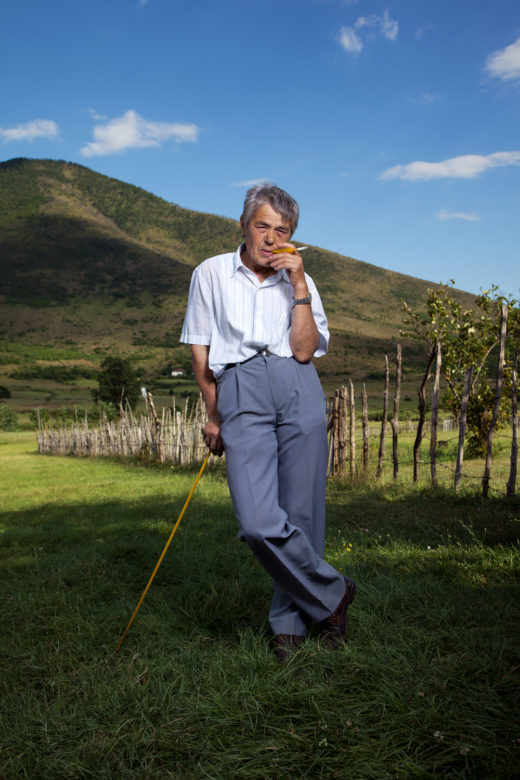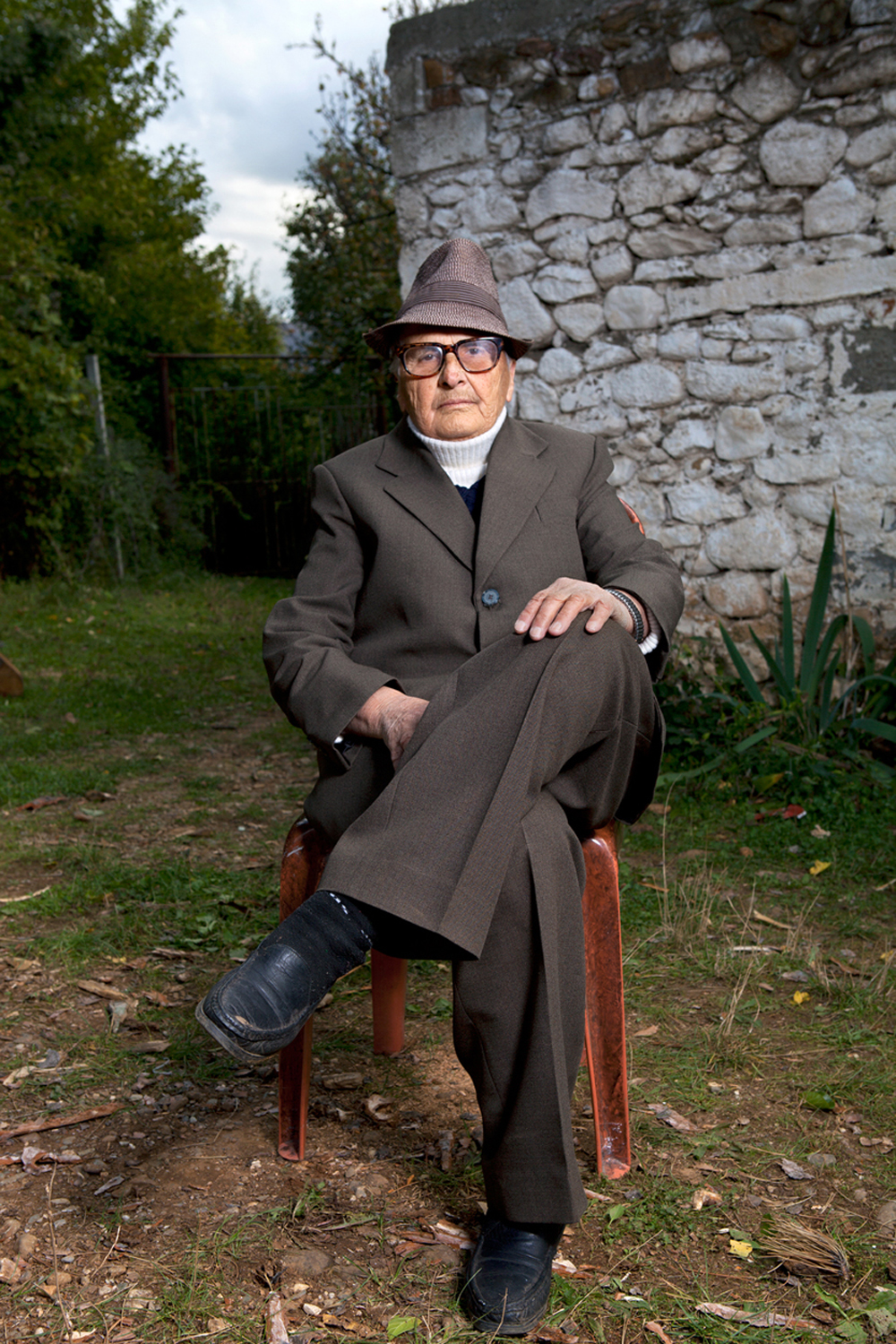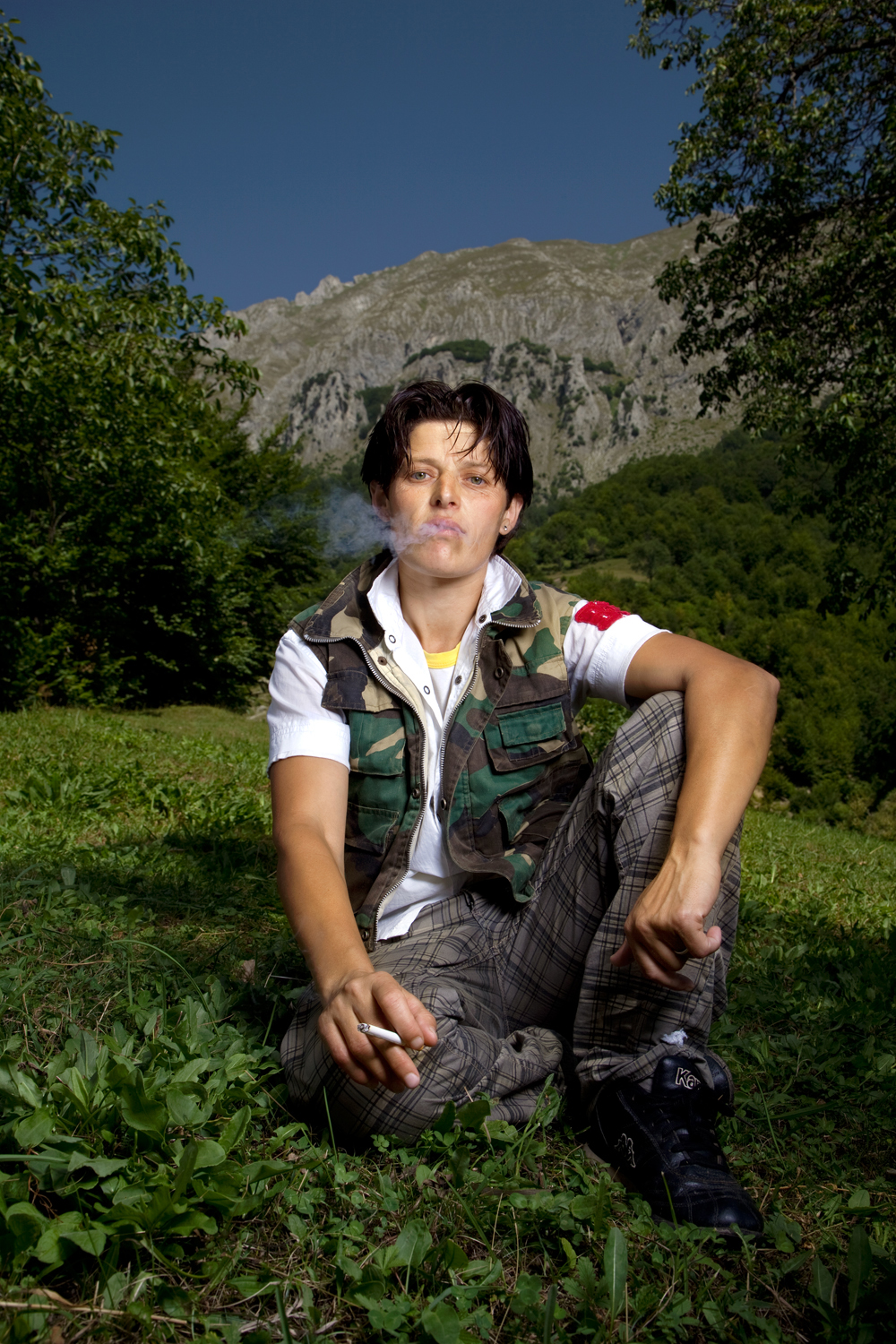Burneshas of Albania by Jill Peters
Claire Breukel
 Jill Peters, Haki, photograph. Courtesy the artist and Unscripted Bal Harbour
Jill Peters, Haki, photograph. Courtesy the artist and Unscripted Bal Harbour
In her Sworn Virgins of Albania series, photographer Jill Peters shares powerful portraits of burneshas, Albanian women who have taken a vow of celibacy and chosen to live socially as men, thereby obtaining rights and freedoms that would otherwise be denied to them. Over a period of six years, Peters befriended and repeatedly photographed seven sworn virgins in their rural villages, creating striking portraits set against a backdrop of idyllic beauty. Though the practice dates back more than five hundred years, there are currently less than thirty known sworn virgins, as increasing freedom for women is rendering this lifestyle obsolete. The burneshas’ decisions to adopt this lifestyle likely reflect their individual gender identities and sexualities to varying degrees and raise questions about identity and its relationship to culture and place, inviting us all to reflect on the circumstances under which individuals are able to fully express their authentic selves.
– Jess T. Dugan
Claire Breukel: You went in search of burneshas in rural Northern Albania using an old publication as a guide, and not knowing if they actually existed or where precisely to find them. What motivated you to set off on this quest?
Jill Peters: I was so instantly intrigued by the burnesha tradition, which was completely new to me. At that time I didn’t even know where Albania is located, much less anything about their fascinating customs when I initially read about the burneshas.
I kept thinking about the fact that the tradition is dying out and that was the biggest motivator for me. I wanted to find some of the remaining few burneshas and take a few portraits, but mostly I just felt compelled to meet them. I used the dated publication you mention because it was literally the only book that came up at the time I did a Google search. In fact, all I could find was that book and an old National Geographic video clip, and that is all.
When I began planning this project in 2008, the hook for me was the historical or anthropological context. I am not a social activist. I didn’t set out to make a statement. Honestly, I was simply following my own path and satisfying my own curiosity. I didn’t show the photographs to anyone for a few years. It sounds ridiculous but I started a website only a week before the project went viral. It was really as simple and spontaneous as that.
 Jill Peters, Hajdari, photograph. Courtesy the artist and Unscripted Bal Harbour
Jill Peters, Hajdari, photograph. Courtesy the artist and Unscripted Bal Harbour
CB: You refer to being a burnesha as a tradition. Can you elaborate on why it is considered a tradition?
JP: The rules that govern this practice were passed down orally from the 15th century, generation after generation, through a tribal code called the Kanun. Only in the 20th century was the Kanun committed to paper.
As a warrior culture, blood feuding was prevalent in a society that settled scores with violence and retaliation. This would cause families to lose many male members through honor killings. When a family “owed blood” they owed the life of a male family member in a feud between two families. These feuds could last for a century or more. In such a case, when there were no more viable patriarchs left to run a family, an unmarried girl would step in and take on that role to lead the clan.
Without a man, the women and children would be left destitute and their survival would be uncertain. The tradition was created to survive this cycle of vengeance through violence.
CB: You maintain that the practice of being a burnesha is different to our understanding of being transgender, nor is it about being homosexual. Burneshas identify as celibate. How do you feel this omission of sex functions to legitimize the act of becoming a burnesha? And how is this connected to traditional ideas of virtue?
JP: I have been entrusted to share what the burneshas themselves have told me. I understand that to be true because it is what every one of them has expressed without exception: that they are celibate for life. Any speculation beyond the facts are just that. Their absolute resolve to uphold this oath deserves great respect in my opinion.
In the 15th century when the Kanun was codified, the lives of men and women were valued in bags of grain. A man was worth twice the value of a woman. The exception was if she was a virgin, in which case she was worth the same as a man.
But to be practical, a burnesha cannot be with a woman because he* is biologically a woman herself and homosexuality was not recognized in Albanian society. On the other hand, he could not be with a man because as soon as he married he would become a wife in the traditional sense, i.e. his property. Therefore the only way to maintain the status of a man was to remain alone. Because sex outside of marriage is taboo, the burnesha had to remain a virgin for life.
 Jill Peters, Lume, photograph. Courtesy the artist and Unscripted Bal Harbour
Jill Peters, Lume, photograph. Courtesy the artist and Unscripted Bal Harbour
CB: Lume is the youngest burnesha you met, and he is in his 40s. Would he be subject to the same gender value system today?
JP: Yes. The northern region of the country still recognizes strict gender roles and values. The old ways still have a strong hold on the society. Lume has expressed to me that he chose to become a burnesha because of the freedom this option provided him. He didn’t want to be told what he could or couldn’t do on a daily basis. Women devote their time and energy to their husband and children. They are bound to the home. When I met Lume, in the local cafe in the afternoon near his village, it was always without exception brimming with men hanging out having lively conversation, drinking espresso or a strong liquor called raki and smoking. Lume and I would be the only ‘female’ patrons. Of course the men consider Lume another guy so it was normal for him to be there. In the rural north, women have their roles and the unspoken laws that govern them remain sacrosanct.
CB: Most burneshas live private lives in somewhat isolated areas, however many were proud to pose for you. Considering the sensitive approach many documentary photographers have to take— to ensure to not exploit but rather pay homage to a subject —how did you approach the burneshas you photographed and make known your intentions for the project?
JP: When I was in Albania my main focus was just to find the burneshas. I didn’t even think beyond that. I never imagined the portraits would go viral. I had taken a big gamble that the burneshas existed and that they would speak with me. When I initially hired my assistant and the translator, I kind of lost my mind and hired a small but complete documentary crew to arrive 2 weeks after me to hit the ground filming. I had signed contracts to pay them and purchased all the plane tickets before I had met any burneshas. I saw it as a great adventure. I never did finish the film but I ended up returning to Albania several times over the next few years for the portrait series. I felt there was a deepened sense of trust between the burneshas and I every time I returned. Fortunately, it worked out.
CB: Understanding that gender inequality is omnipresent, how does this project resonate for you today?
JP: This tradition, at its core, calls for a woman to suppress her sexuality in exchange for a shot at the same opportunities a man is god given at birth. If we look into what those rights consist of, we see that because a woman puts on a pair of pants and cuts her hair she is suddenly more capable of driving a car or holding a different type of job. She is suddenly able to manage finances and make decisions at the community level. Her voice will now be heard, not only within her family but throughout the village at large. She will be trusted to carry a weapon, and she will not offend anyone by choosing to smoke or drink. She is still the same woman, she is simply dressed differently. Because she resembles a man, she is perceived as a man. Meanwhile other women, living in the same community, who did not choose this path—women who are wearing aprons and raising children—are denied those same rights. I think we can all see the injustice in that.
*Although burneshas refer to themselves as both he and she, we have chosen the pronoun he for consistency.
Exhibition tour and talk with Jill Peters and Jess T. Dugan
Sunday, August 26 at 5pm at the Ritz Carlton Bal Harbour
RSVP to unscripted@balharbourflorida.com by August 22.










